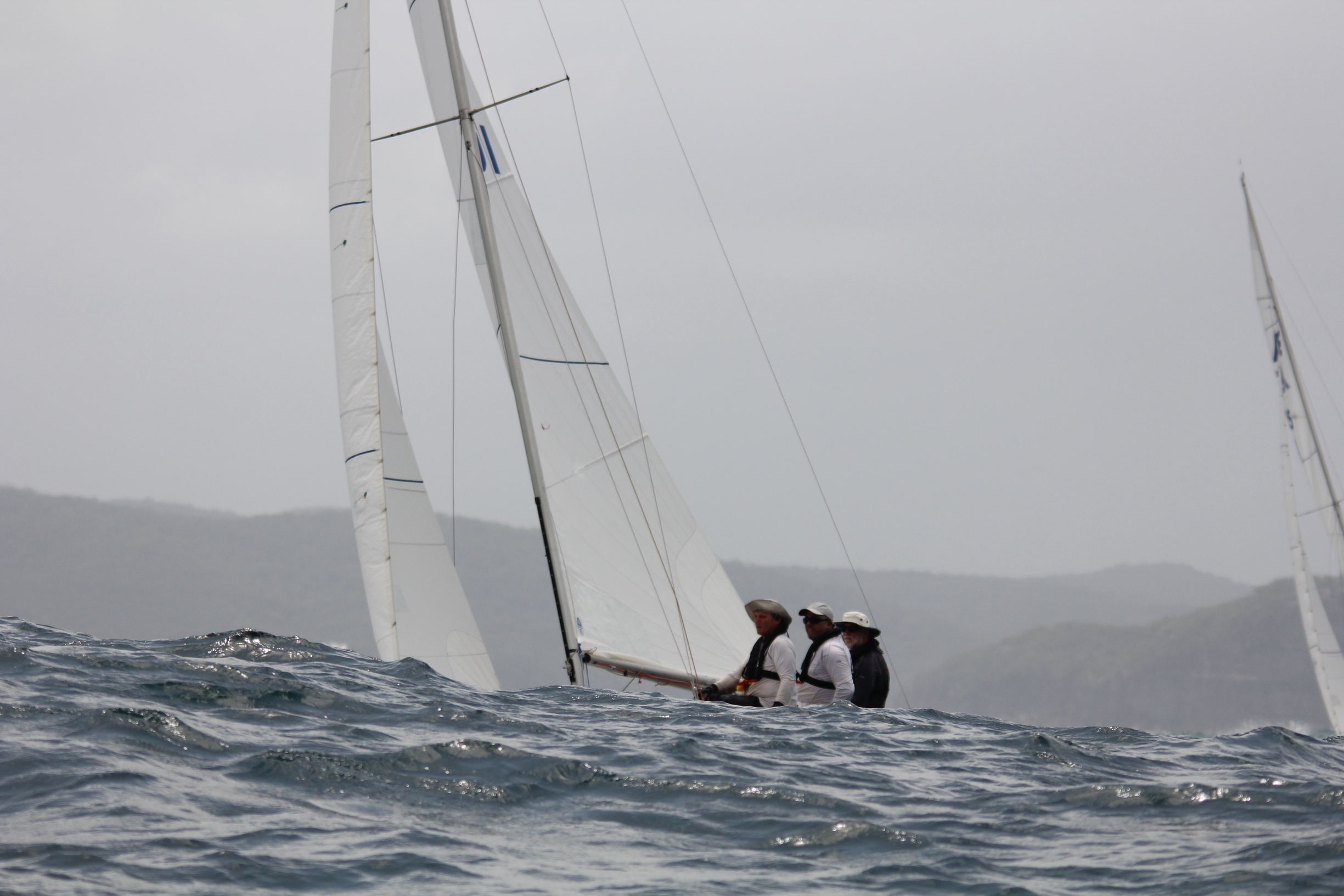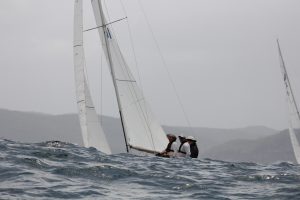

Waves are never helpful when you’re racing upwind. Sailing in flatter water is always faster, and that should be your main aim on beats.
To be fast in waves requires a team effort between the helmsperson and crew. A crew member should be tasked with calling waves. They must keep the steerer informed of the approach and relative size of waves and a countdown such as “wave on you in 3, 2, 1”.
Each team should develop an alert system that suits them.
There are different ways of dealing with waves upwind.
Steering straight through waves –
This is the best option where the waves are everywhere and too small to steer around. In a big, heavy boat this is the most likely approach as the boat is slow to react to the rudder.
When the waves are large, this is not always the best approach but steer to keep the boat moving a little faster by putting the bow down a degree or two.
Anticipation is important and when faced with a bad wave, shift gears before you get to it. This is where the crews warning needs to give the team enough time to power up the sails before getting to the larger wave.
Steering over waves –
This is the best option when waves are further apart. This is particularly suited to smaller lighter boats.
The technique to use here is to head up on the front side of the wave and bear off on the back side. The steeper the wave and the faster your speed, the more sharply you will have to turn your helm.
In light boats, use the crew weight in conjunction with the steering for greater effect. Lean aft and in a little as you go up the wave and then hike out and forward and ease the mainsheet as you go over the top and down the back of the wave.
Avoiding waves –
This is always the best option but unfortunately it is not always possible.
Look across the course to see if you can see areas with less disturbed water. There may have been a power boat or two travelling across a part of the course or an area with particularly large steep waves.
The techniques that work best in waves are often subtle enough that you never know how well they are working until you measure your performance against nearby boats.
Test your wave strategy before the start and continue to evaluate it during the race. If you’re not fast, change something and try again!
How much to steer in waves –
When you turn your rudder to steer around waves, the drag you create will also make you go slower. Steer with sail trim and body weight to reduce rudder movement.
You are always searching for the optimal trade-off between using a lot of rudder and missing waves versus using less rudder and hitting waves.
The only true way to judge whether you are doing a good (fast) job of this is by comparing your performance to that of a nearby boat.
It’s critical, when you have waves, to train with another boat if possible and to tune up with a competitor before every race. While you are doing this, try different steering techniques to see what is fastest in the unique conditions that you have on any day.
The last thing you want to do in a wavy race is to be looking for the groove as you come off the starting line.

